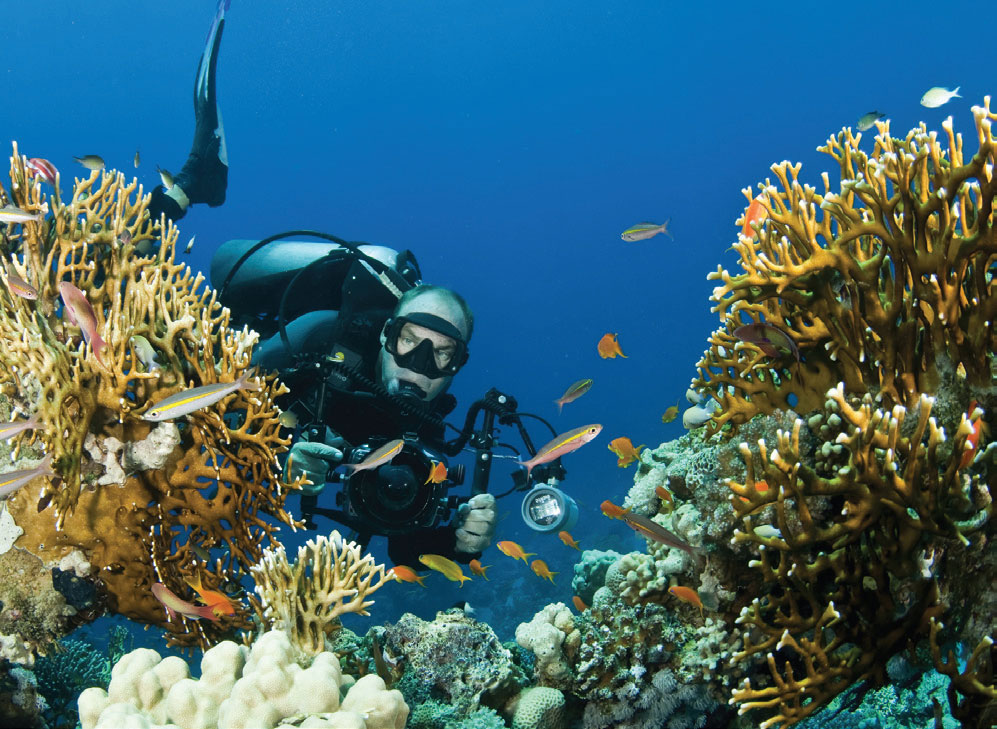Underwater Photography
A NEW WORLD
The roots of underwater photography can be traced back to a German inventor unsuccessfully taking pictures through the windows of a Russian submarine during the Crimean War in the 1850s. Around the same time an Englishman took some pictures using a camera in a waterproof box. His photos came out only slightly better than the German’s. Shooting underwater is complicated on a number of fronts, not the least of which is figuring out how to keep the camera and film dry. Beyond the practical mechanics of putting a camera into water, there is an element of physics at play: Shooting through liquid into refracted light poses all kinds of issues. The first successful underwater photographs were made in 1893 by French scientist Louis Boutan, who is widely regarded as the father of underwater photography; the principles he established are still applied today.
The public’s fascination with underwater photography and cinematography grew during the 1920s and ’30s. In 1927, National Geographic published the first color, underwater photographs. As advances in diving equipment progressed, there was substantial progress in submersible camera technology. In the late 1950s, famed marine explorer Jacques-Yves Cousteau conceived of an underwater camera, the Calypso, which was then designed by Jean de Wouters and manufactured in France. Production of the camera was later taken over by Nikon, renamed the Nikonos in 1963 and went on to become wildly popular with amateur skin divers as well as academics and professionals. —DJG


